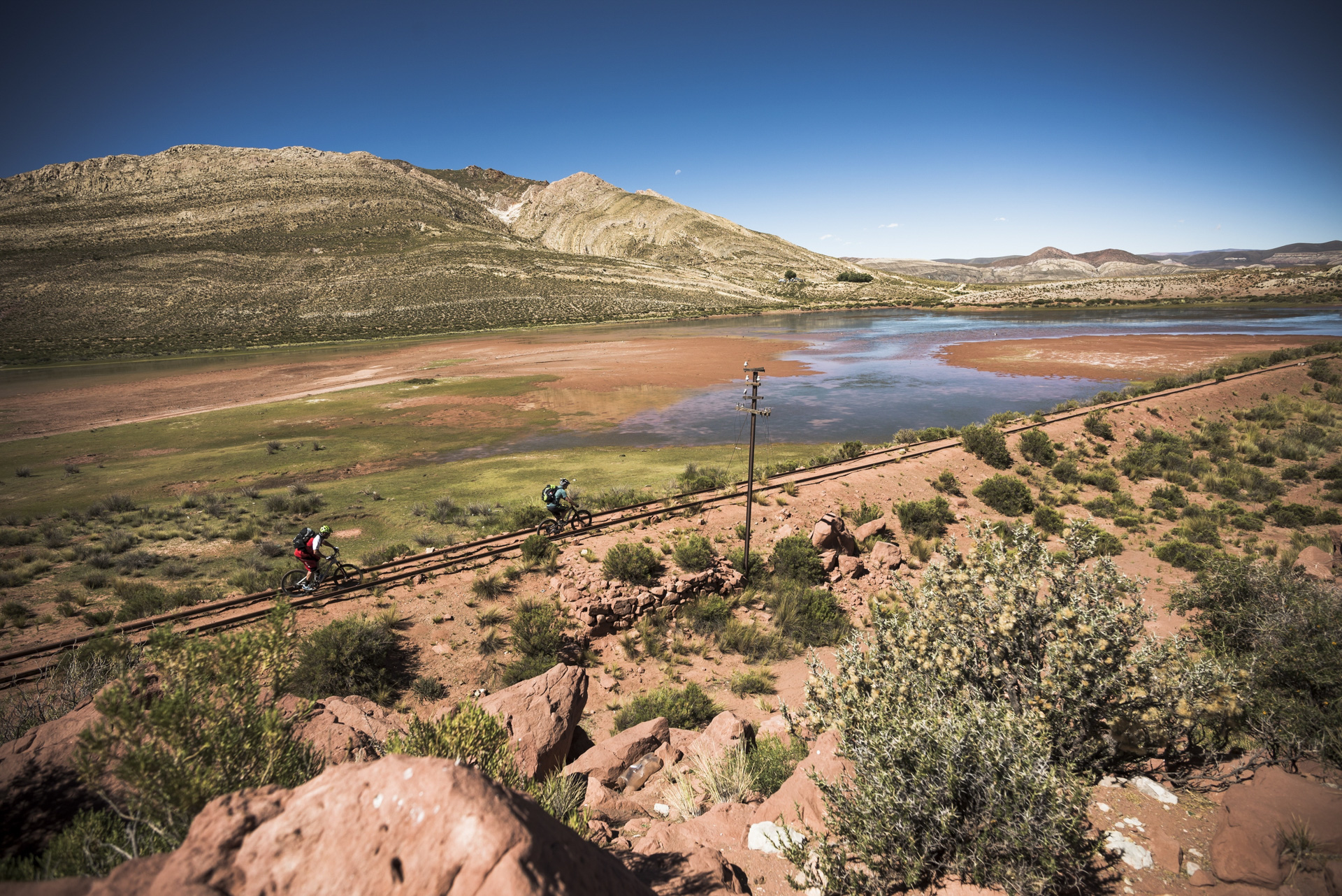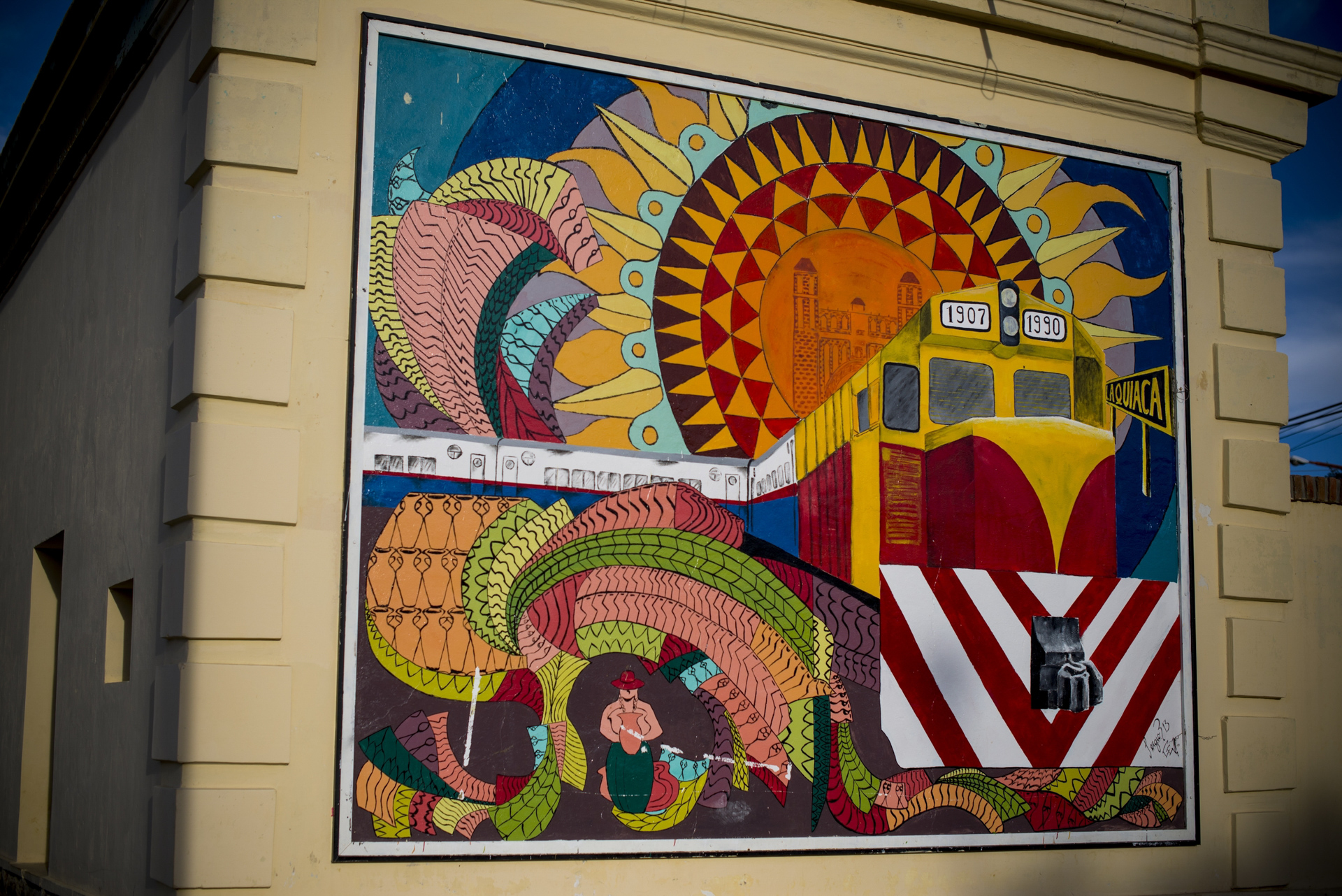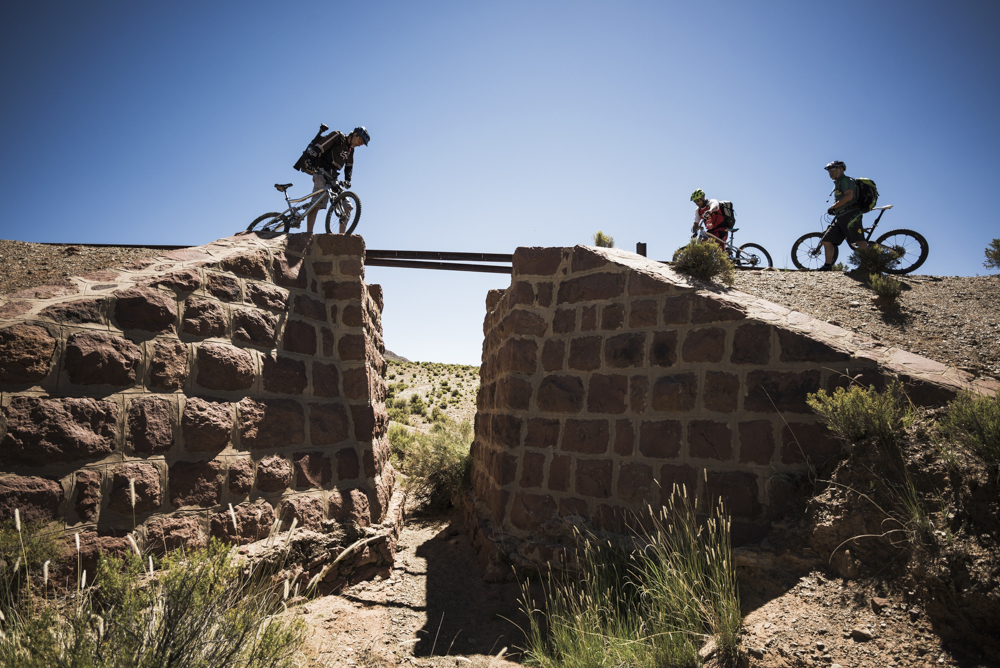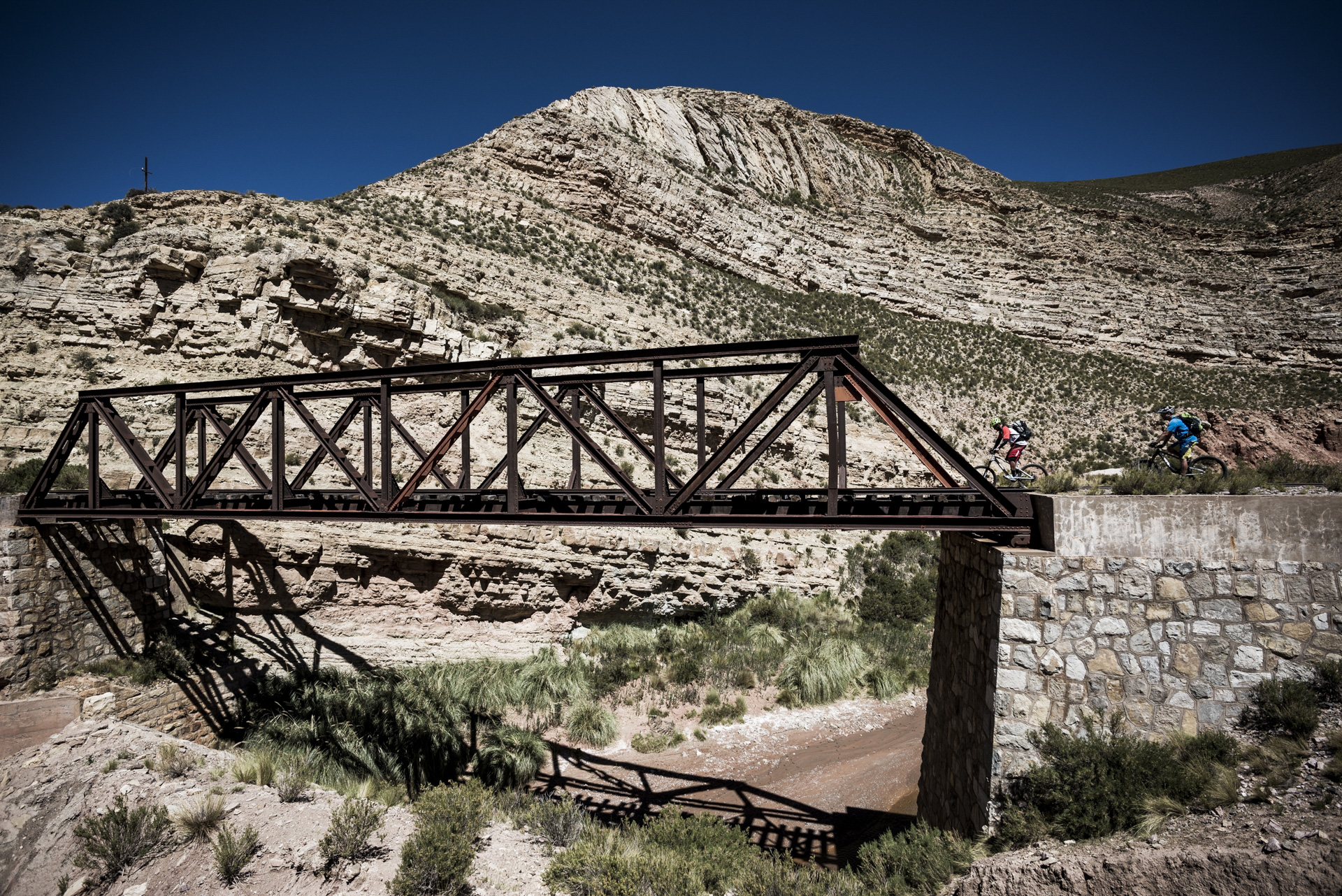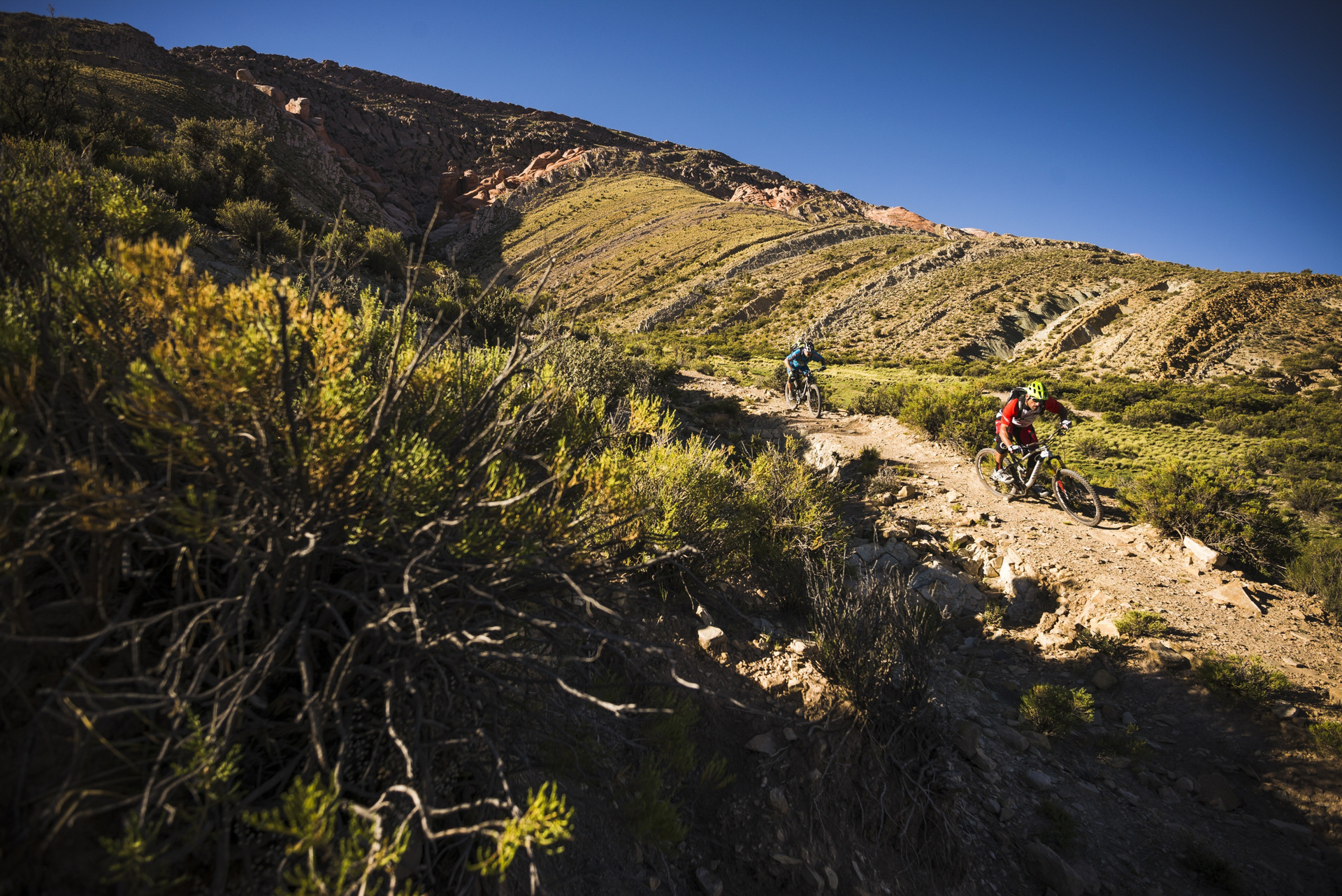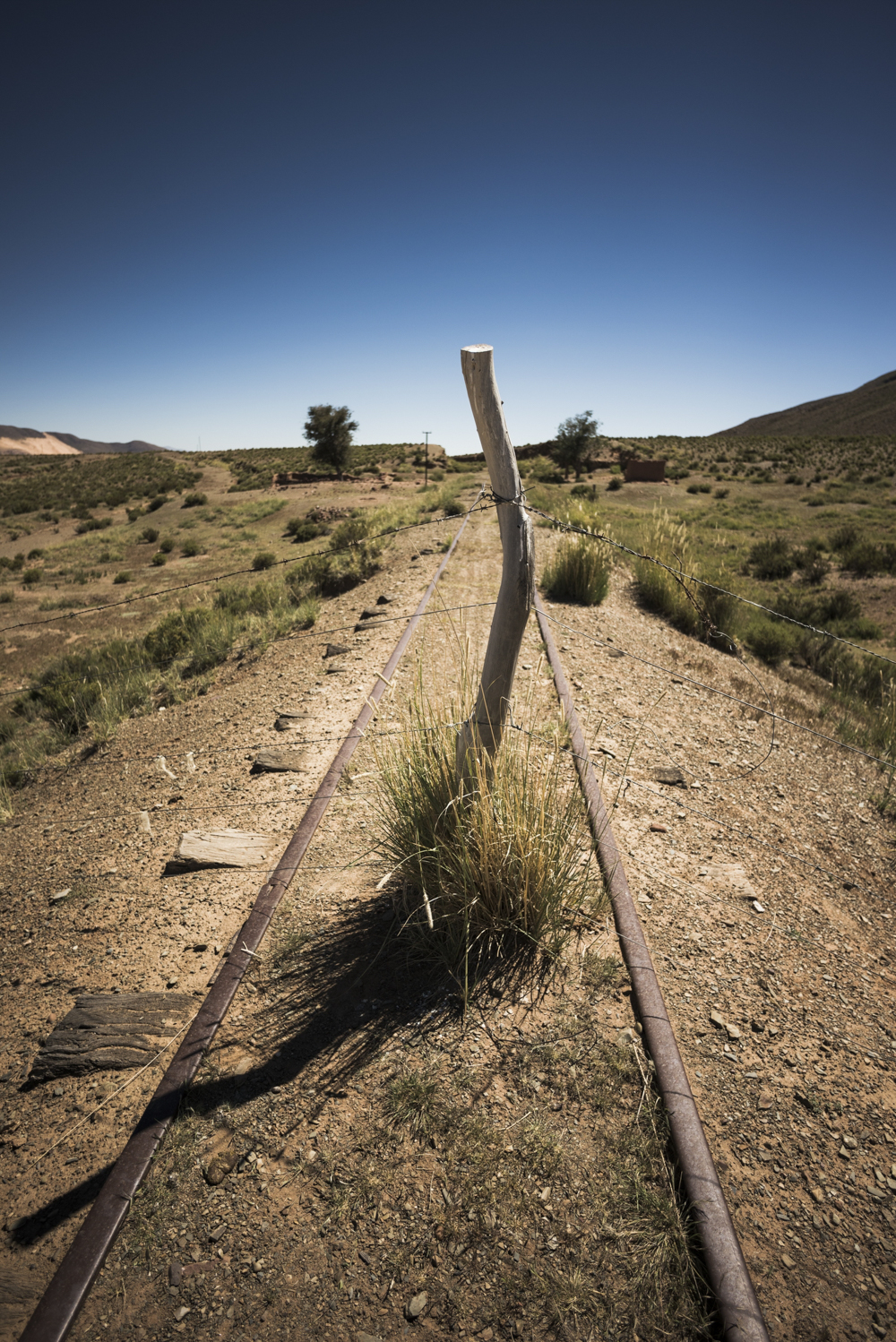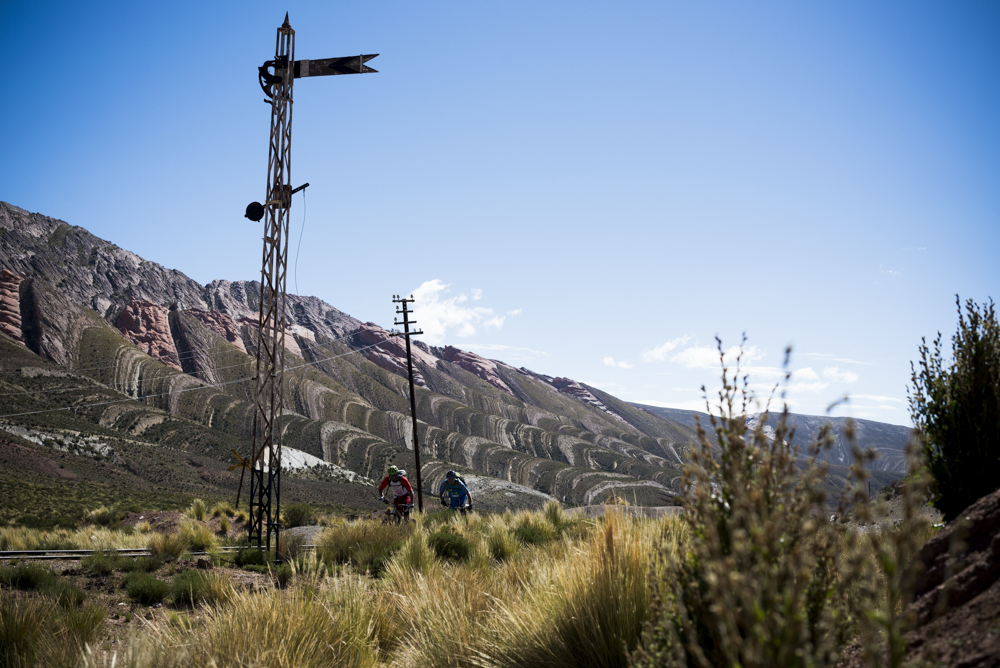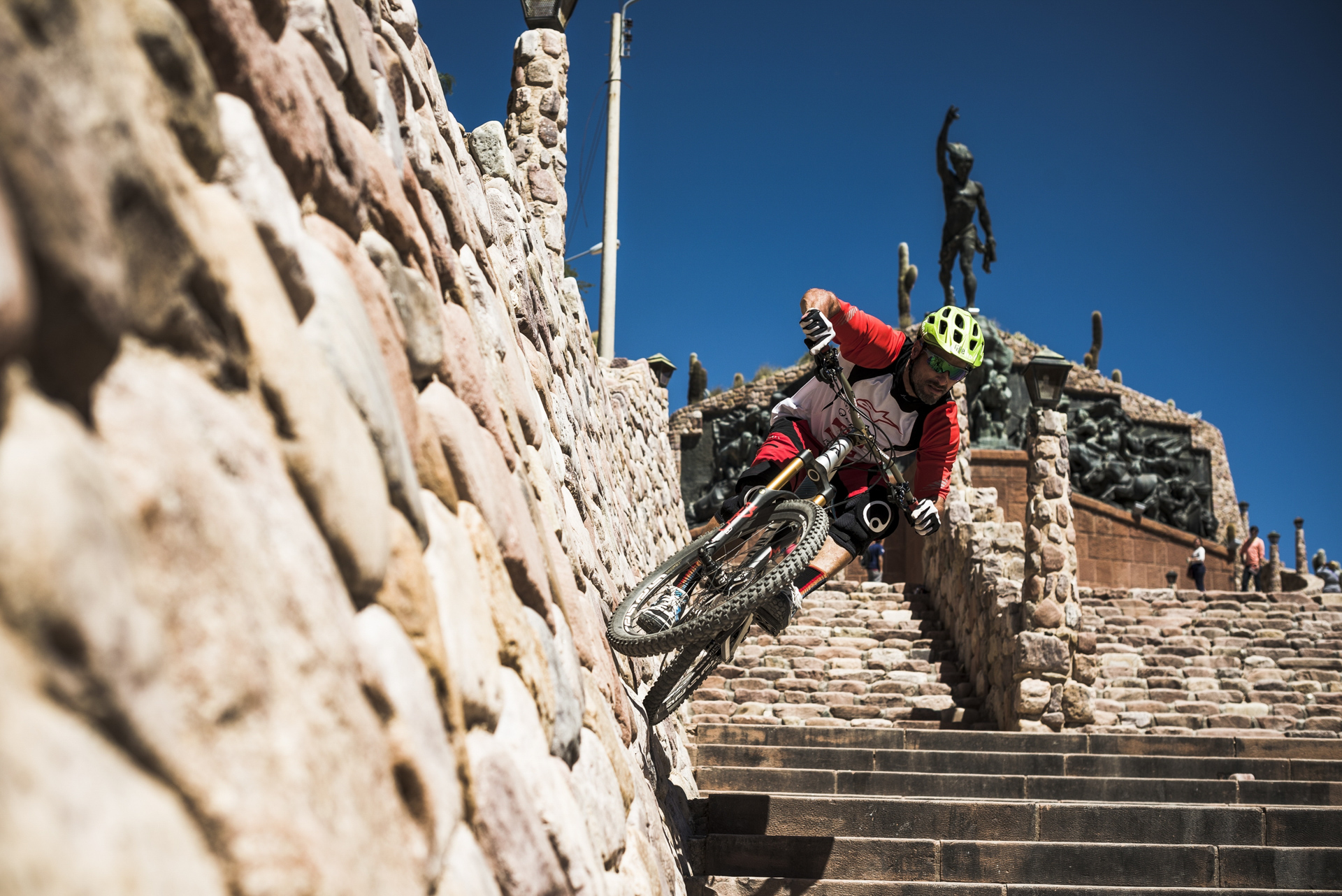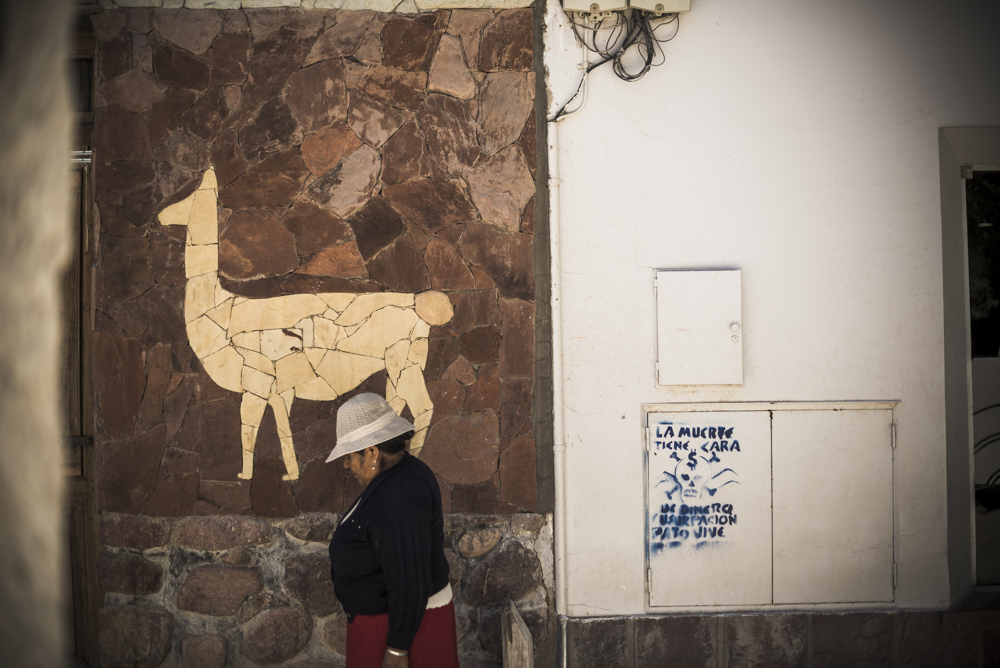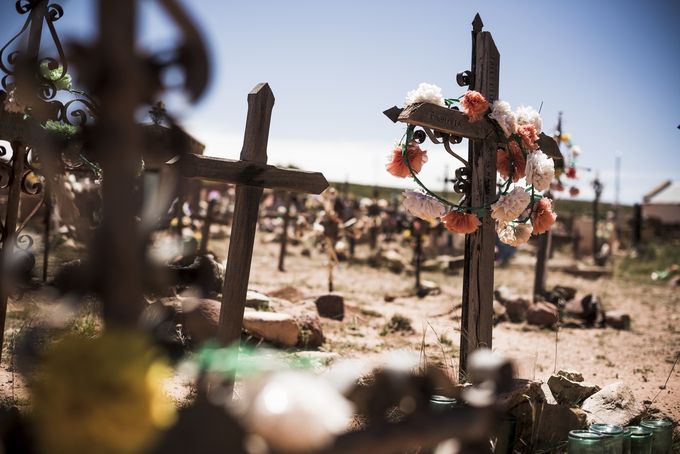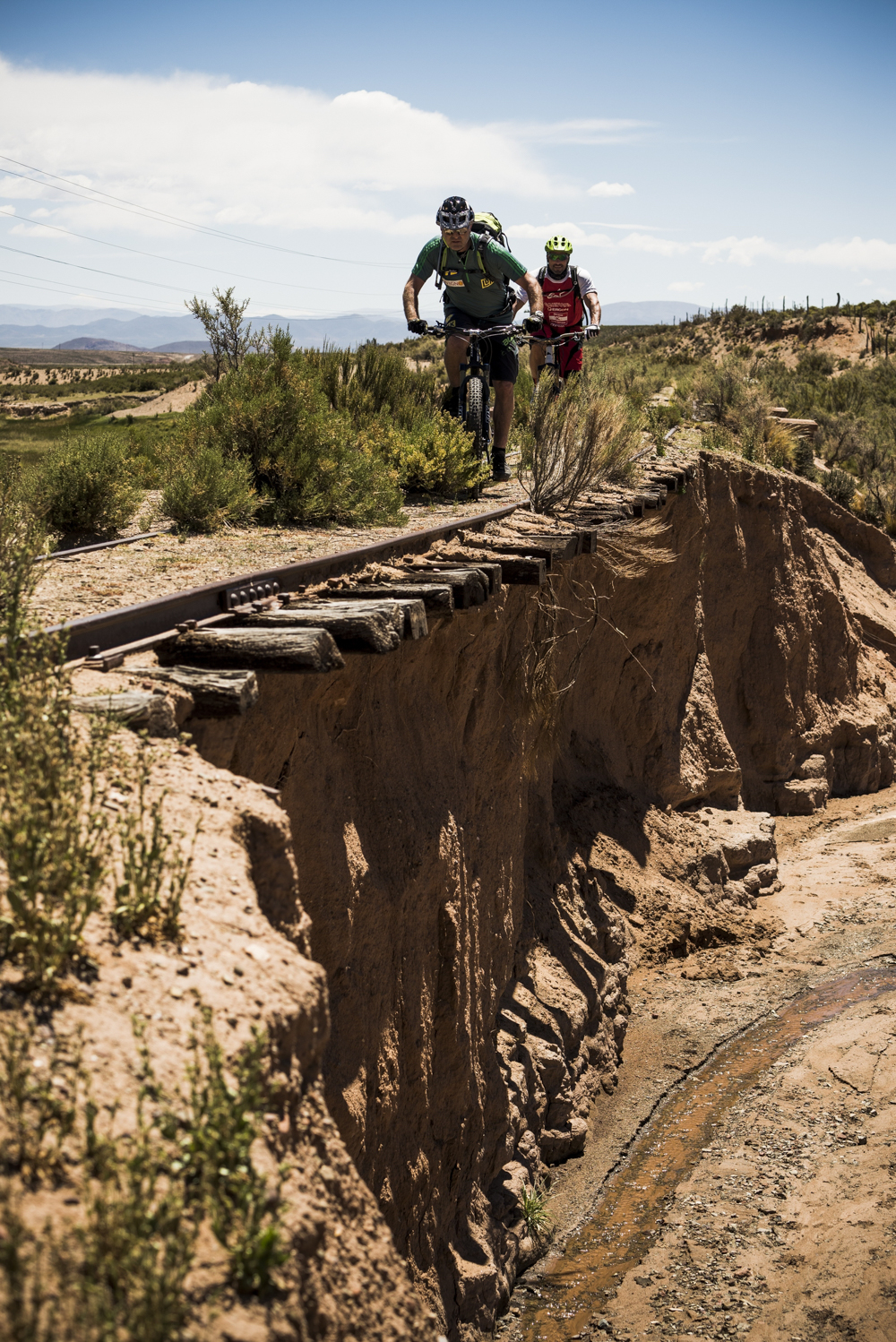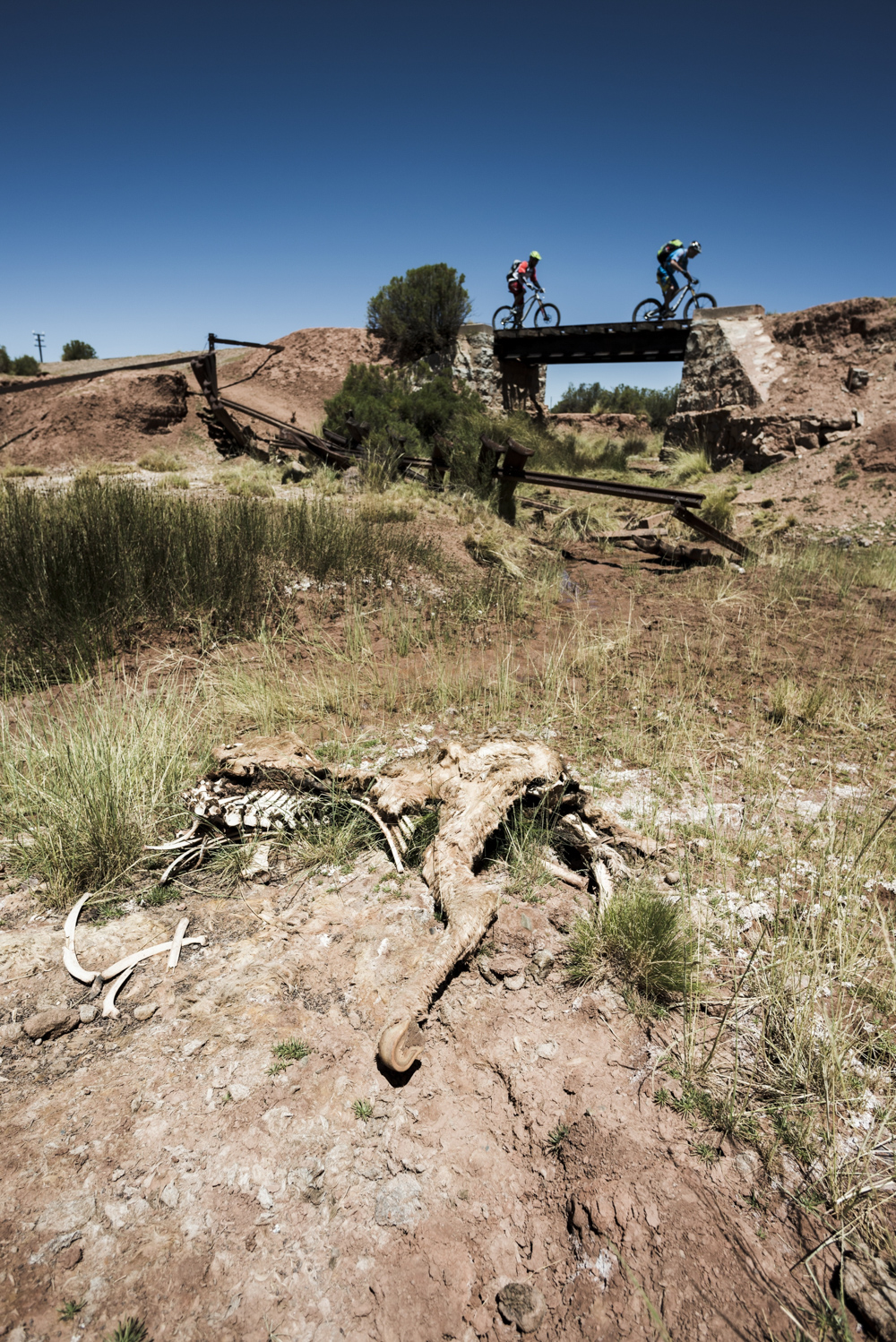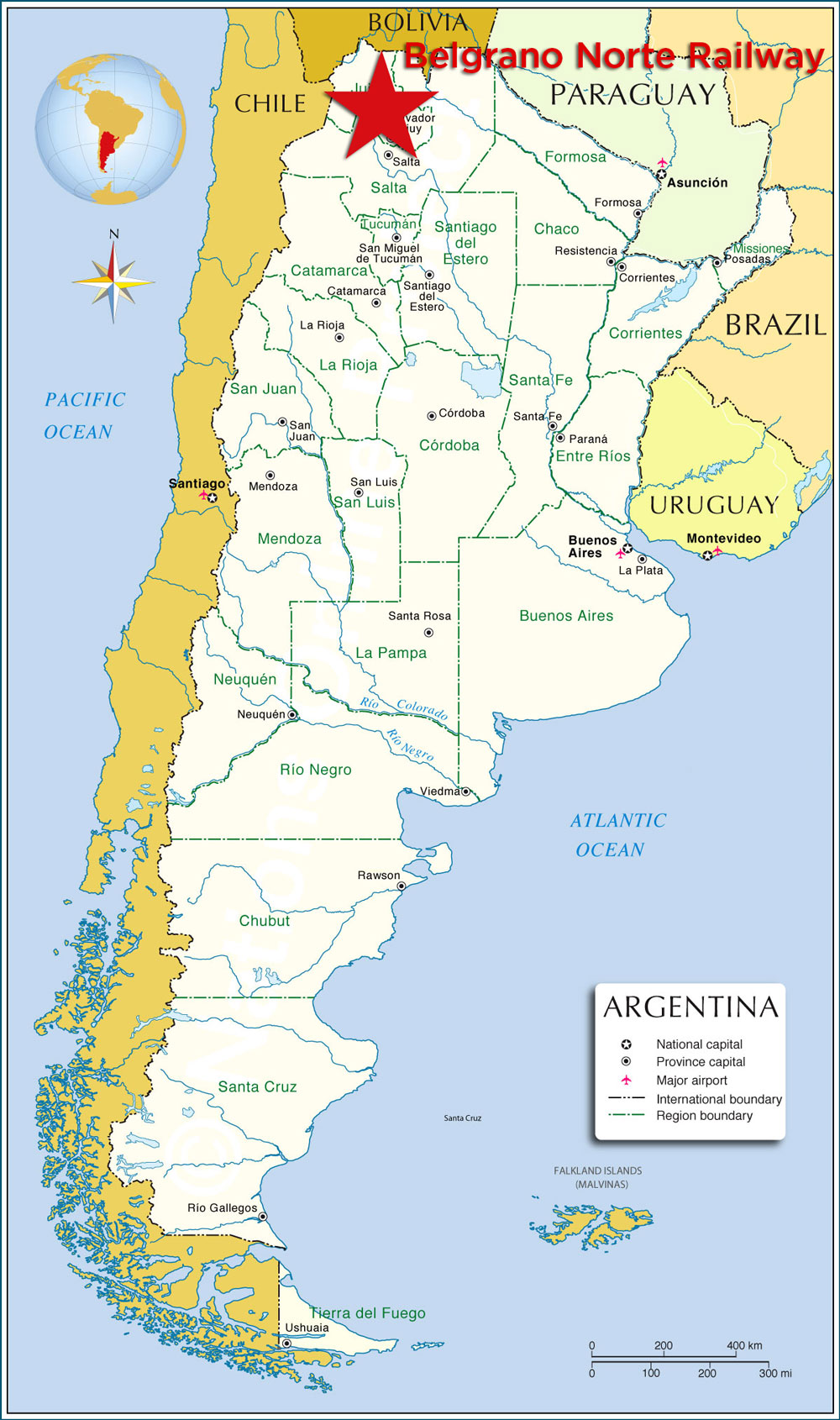Words and photos by Dan Milner
‘Death has a face’ reads the slogan daubed above a solemn skull and crossbones, emblazoned with a US dollar sign. Stencilled onto the stonework of an old building in Humahuaca’s central plaza, I read this graffiti as an open warning about the darker side of US imperialism, which has long been entangled with Latin American politics.
As I repeat the words to myself, a short, indigenous Andean woman scurries past, head down, eyes averted, oblivious to the sloganeering. She has work to do, tourist trinkets to sell. And who can blame her: life isn’t easy here, it never has been.
I wonder if the woman is aware of the graffiti, if she agrees, what she thinks. I wonder what she makes of us — four dusty, grimy, sunburnt gringos straddling state of the art mountain bikes, or even if she cares. And for a moment I’m uneasy. After all, it is this region’s economic hardships that gave birth to the basis of our bike adventure: the Belgrano Norte Railway, a once thriving industrial masterpiece that money turned its back on.
“Life isn’t easy here, it never has been…”
We’ve rolled into Humahuaca after three days spent riding along this railway line, converting the metre-gauge railway track into adventurous singletrack. It sounds like an unlikely mountain bike ride — something that should probably be relegated to the ‘biggest mistakes in mountain bike history’ file, but for the most part it’s worked.
For 100 kilometres we’ve traced the course of this rusting remnant of yesteryear as it cuts its beeline across an arid landscape dotted with cacti. We’ve steered wheels around a thousand thorny bushes and treated the railway’s decrepit iron bridges as just another ingredient in a recipe that already includes 35 degree-C heat and a lung-crunching 3500m altitude. And now, arriving in Humahuaca, our chosen end point, we have time to reflect on our adventure.
